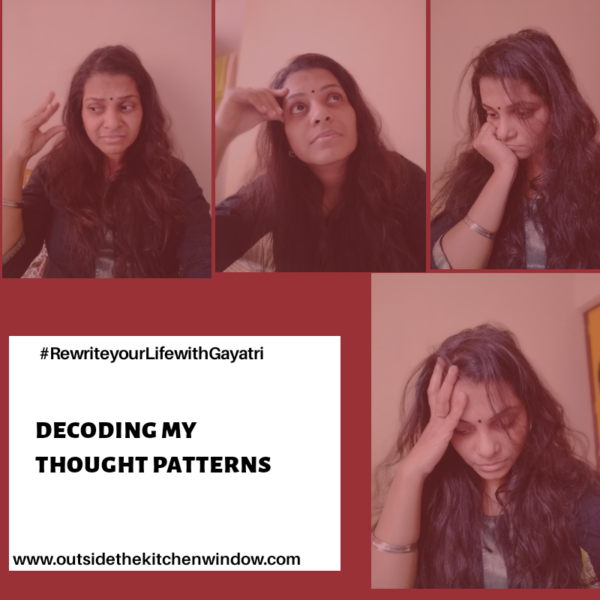‘It’s all in your mind’ I am sure you all must have heard this phrase and let me tell you to some extent it is true.
“Everything is created twice, first in the mind and then in reality.”– Robin Sharma
For years I was in a depressive phase and slowly there were biochemical reactions in my body and I became ‘Clinically Depressed’. I was under medication for two years but the medicines would just numb the sensations/symptoms and there was no improvement in my condition.
I tried reading self-help books, yoga, meditation and dance, however I found it difficult to navigate through that low phase. I surrendered to my situation completely. At one point I felt there was no hope and that’s the moment when I discovered NLP (Neuro Linguistic Programming).
If you research about NLP, you will find many articles on Google but let me explain this term to you. NLP is a tool or a user manual to understand ‘The Way Your Brain Functions’. It allows you to explore and decode your thought patterns. Basically it gives the answer to the most important question, ‘Why do you behave in a specific way?’
When I started exploring this area, I realised that there was a pattern in which I was thinking and that led to a biochemical reaction which in turn was the reason of ‘Clinical Depression’. That’s when I decoded my thought pattern.
My thoughts were re-presented in three ways mentally-
1) Mental Images/Movies/Slide Show: All my unpleasant memories played in front of me, in a 3D movie, with bright colours and clarity. It was as if I was watching a movie in Imax Dome. As the memories kept replaying, I found it difficult to shut my eyes and go to sleep. I spent most nights crying or listening to sad songs.
2) Sounds/Inner Narrative/Self Talk: As this movie played in front of me, there was a strong inner narrative playing in the background, just as the background music in movies. ‘You are good for nothing’, ‘You are shameless’, ‘An unfit mom, wife and daughter’, ‘You don’t deserve love and such a good life’, ‘You have to struggle’- snippets of my self-talk. These voices were harsh, loud and fast.
3) Feelings/Sensations: As this movie played with my harsh and loud self-talk, certain feelings or sensations began to rise in my body. As I started to observe them, I found that these sensations were located in a specific area of my body e.g. – my forehead, chest, gut, shoulders and knees. And this led to another realisation that these areas were directly related to diseases I was suffering with- asthma/wheezing issues, head & shoulder ache and knee pain.
With the guidance of my mentors Antano and The Lightweaver, I worked on rewiring the way I re-presented my thoughts.
- I drained the colour out of the movie, threw cans of black paint on it, made it 2D and pushed it far away.
- I then changed the tone of the self-talk, made it softer and slower. I then dubbed this self-talk with Donald Duck’s voice and that made it sound funny and uncertain.
- I observed that as I did this, I felt a strong release of sensations and slowly the heaviness in my chest dissolved, the headache disappeared and the knee pain never returned.

Now this may sound like a very simple exercise to do and yes, it is simple. Here are few steps to help you-
- Write down your thoughts. This is the first step to disassociate or observe your thoughts.
- How are your internal re-presentation of the thoughts/memories? Is it a movie, slide show or image? Is it colourful? Is it a 3D/2D representation? Is it clear or hazy? Where is it located-near or far? Draining the colour and making it 2D often lowers the intensity.
- Push the image far away, put the image in a box and throw it far away.
- How is your self-talk-harsh, loud, soft, whisper? Is it too fast or slow? Is it towards your left or right? Whose voice is it? Use a softer tone and reduce the speed. Try dubbing it with a funny voice or add a funny tone to it.
- Where are your feelings located? Are those sensations moving or still? What is the temperature of this sensation? When you work on the visuals and sounds, you will begin to notice the shift in the sensations.
While you can do this on your own, I’d highly recommend guidance of a therapist or a trained NLP practitioner. If you are interested in decoding your thought patterns, I’d be glad to guide you through the process. You can email me at gs.aptekar84@gmail.com and we can schedule a Skype or a one-on-one session. Let 2019 be the year of healing and personal growth.
Lots of love and gratitude,
Gayu
What a wonderful post….Really helpful..Thanks for writing….
Lovely post Gayatri the moment I thought how it can be the same what I am going through
Super post ,Miss Aptekar …unbelievable
Super mam…unbelievable
Loved reading this post!! You have explained NLP beautifully. I used to be in a similar phase so I can completely relate to this. Sending you virtual hugs and keep writing such beautiful blogposts . Looking forward to reading them.